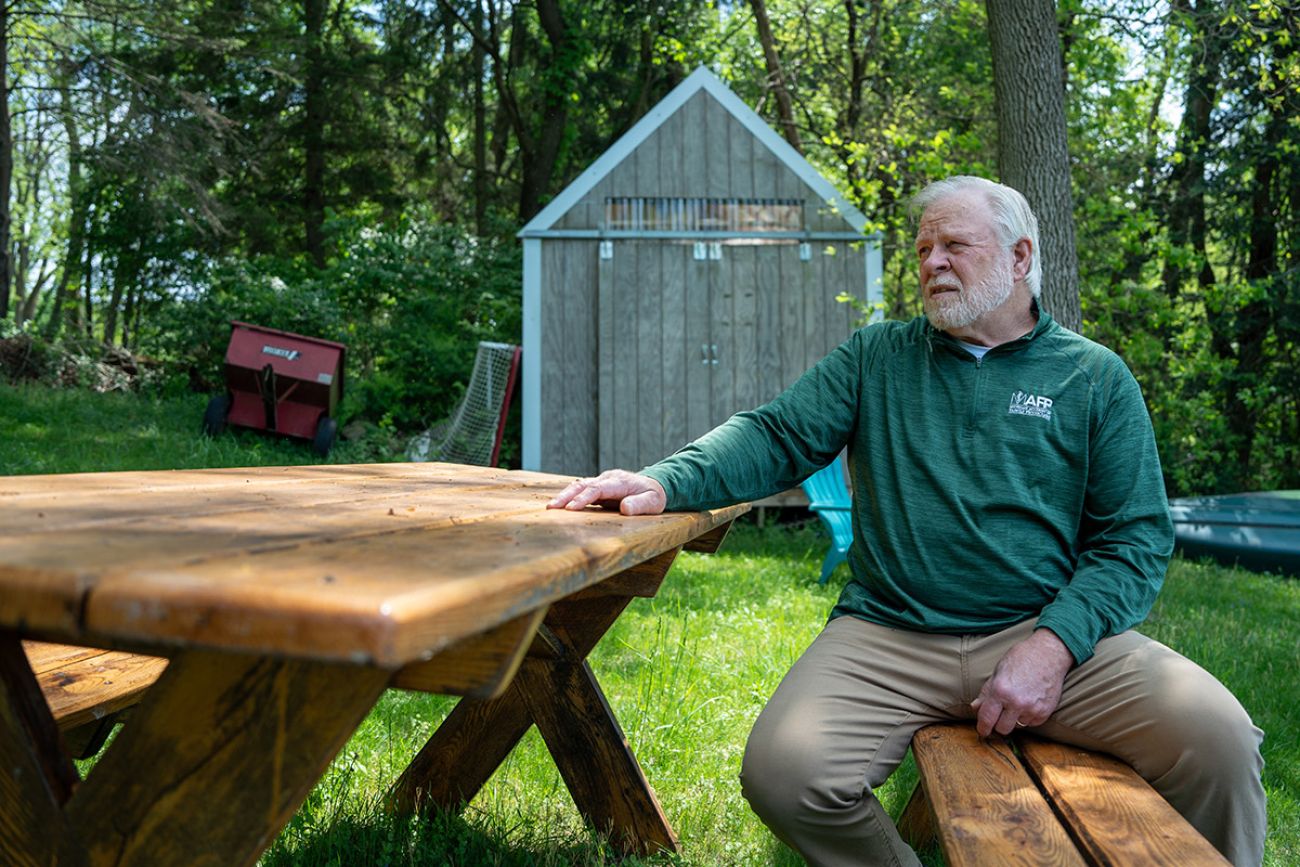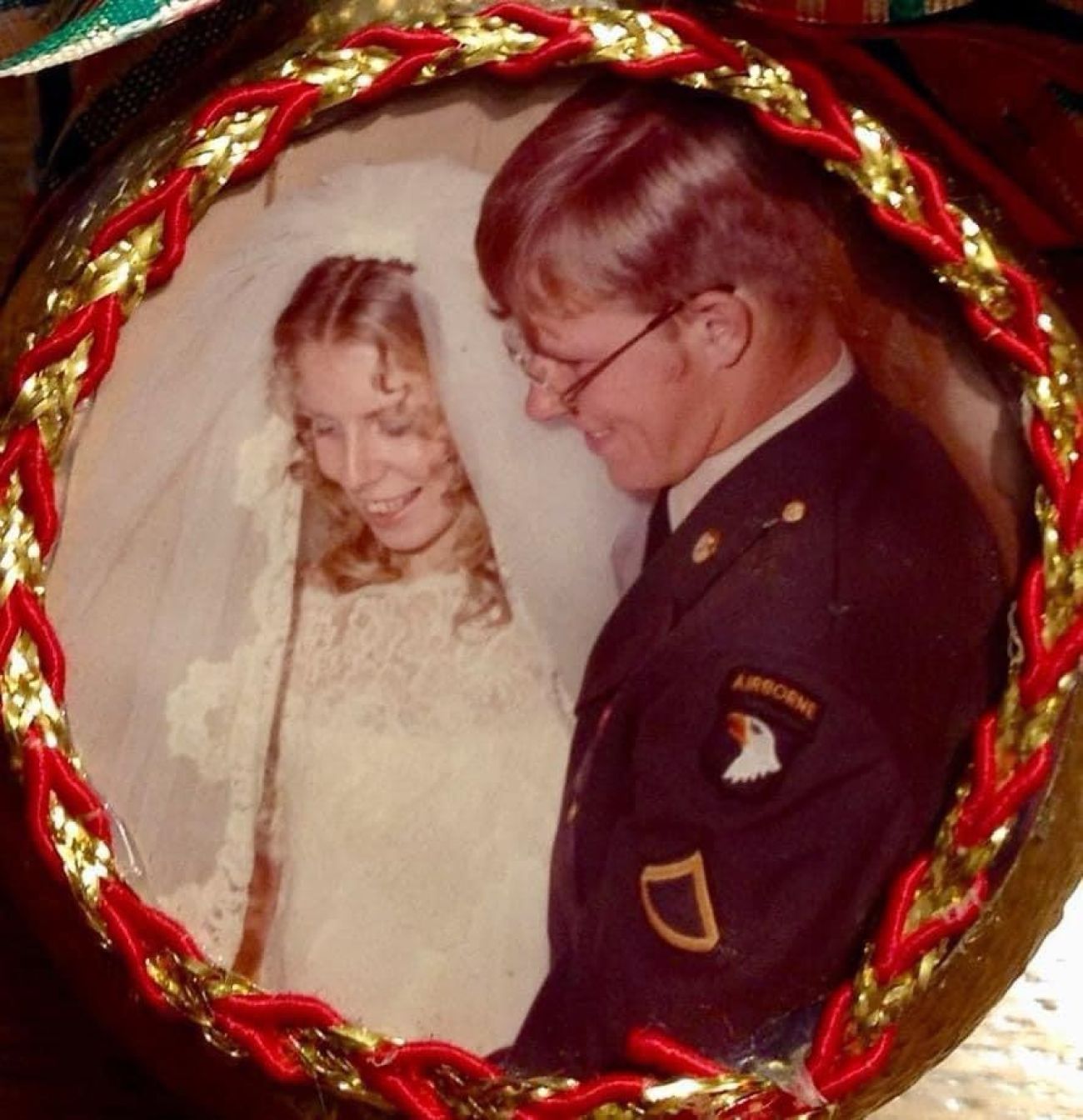One of Michigan’s top doctors hid a secret from everyone. His drug addiction

- Michigan doctor’s addiction began one pill
- One pill became dozens, and the occasional cocktail turned into hidden bottles of Scotch.
- Now, he’s sharing his story as Michigan and other states reach out to doctors who are also users
JACKSON — Two yellowing sheets of paper in his home office are the remnants of a secret that nearly destroyed Dr. Glenn Dregansky.
“Following several surgeries,” reads the admission to an Ohio drug treatment program, “the patient was introduced to opiates, which he began to abuse… .”
“Vicodin, Oxycontin, Percocet,” the document reads…
“Hydrocodone, Demerol, Pamelor, Halcion…
“Ambien, Soma, Restoril.”
Dr. Glenn Dregnansky, who is now chair of the Michigan Academy of Family Physicians, wasn’t prescribing the drugs. He was stealing them.
“Chewing them like candy,” he clarifies.
The particulars of the thefts no longer matter, he says now, and he is deep in recovery. What matters is that Dregansky’s story reveals the two truths as inexorable in larger discussions about Michigan’s drug crisis that kills 3,000 residents each year.
Truth 1: Opioid abuse addiction can happen to anyone — no matter how prestigious the career or loving the spouse and family.
Truth 2: Recovery is possible — even from the very bottom of a breakneck, near-annihilation spiral of addiction.
“I thought I had to die or go to prison. There was a third option,” Dregansky said.
These days — 21 years after his three-year battle with addiction — Dregansky talks to young doctors still in residency.
Related:
- Michigan taps opioid funds for tiny drug victims — babies in withdrawal
- Drug deaths drop in Michigan as task force weighs how to spend opioid funds
- There’s a proven way to help kick opioids. Not enough in Michigan use it
Studies have placed the prevalence of substance use disorders (SUDs) among physicians as about equal to that in the general population — about 8% to 13% by one count and slightly higher by other counts.
But doctors are beginning to open up, copping to their equal vulnerability to addiction as anyone else — maybe even more so because of unacknowledged burnout and depression. With a new understanding of substance use disorders, some states are shifting policies, grappling with questions about whether the public should know which doctors have sought treatment and how much health providers should know about their new employees’ struggles with substance use.
In Michigan, some health care leaders are pushing for language changes in licensing rules that acknowledge the vulnerabilities of doctors to substance use disorder and make it easier for them to seek treatment without the fear of losing their license, said Dr. Salim Siddiqui, president of the Michigan State Medical Society.
“If we want these physicians to get the help, it cannot be at the expense of the career that is their calling,” he said.
When Dreganksy addresses newly minted doctors, he most wants them to know about the third option — the one beyond death or prison.
But that’s not where the story starts.
One pill becomes another
The story starts this day in a tidy lake house just south of Jackson filled with mementos and pictures of travels and family life. The pendulum of a clock swings on the far wall.
Now 71, Dregansky toggles easily between his listening ear and a self-deprecating story. He proposed to his now-wife, Melodie, in 1972 — he was in the Army at the time — by telling her he would make $105 an hour if he were married.

“Romantic, ri-i-i-ight?” he grins, shaking his head. Facing him in her own chair, Melodie shakes her head and laughs.
“I’ve spent 50 years trying to make up for it,” he said.
Melodie accepted. They had met in seventh grade in New Boston in southeast Michigan. Her parents drove them to the movie theater for a first date.
More than a half-century later, their stories have been so often repeated together that it’s as though they are at times locked in a verbal roller derby to the punchline.
The years afterward were marked by multiple military moves, medical school at Michigan State University College of Osteopathic Medicine, a stint as a command officer at a clinic in Germany and the births of a son and a daughter.
Life took them to Mount Pleasant, in the mid-1980s, where he rooted his career and she became a speech pathologist. The working hours were relentless. There were late-night calls, weekend emergencies.
Sitting at a restaurant one day, the couple’s dinner was interrupted by a shout across the tables:
Hey Dr. Dregansky, Do you do Medicaid vasectomies?
“I looked at him and I said, I will be out in the car. I am leaving,” Melodie Dregansky said. “You were in a fishbowl all the time.”
Seeking privacy and more manageable hours, the two — now 40-something empty-nesters — moved to Temperance in 1997, where Dregansky took a job just across the state line in Maumee, Ohio.
By the late 1990s, opioids and addiction had not yet been connected in the public eye. Pharmaceutical samples of pain pills flooded doctor offices. An international chorus of doctors and scientists, through the Declaration of Montreal, declared it a moral failure for doctors to fail at alleviating patients’ pain.
So when Dregansky’s arthritis began flaring up as he hurdled toward his 50th birthday, it wasn’t such a big stretch to simply reach inside an office cupboard, he said.
One pain pill became two that became a handful that became a habit.
A hip surgery in 2000 offered even more pills — prescribed this time. Another hip surgery followed two years later. More pills.
The occasional cocktail with friends turned to drinking alone.
And when he ran out of the prescriptions? For a doctor, there were always more pills within reach, he says.
Looking back, Dregansky now says there’s no one answer to why Dregansky fell so deep and fast into addiction. There are many.

It was easy, for one, he said. The pills were there.
“You make up excuses for it. On its face, using chemicals is insane behavior. It's crazy, right? So rather than look in the mirror and admit you're crazy, you make up excuses. You justify. You rationalize. You come up with a defense.
“I was overworked, depressed.”
Melodie Dregansky has another answer, at least a partial one. Her husband grew up in a sometimes violent childhood. Her family took him in.
“That’s not why he drank but it had to do with keeping, you know… “
“...secrets,” the two say in unison.
And dope sickness happens fast.
In Dregansky’s case, it was a powerful return of pain through opioid induced hyperalgesia. It happens when opioids — designed to alleviate pain — paradoxically make a person more hypersensitive to pain. Eased temporarily, the pain returns with more force, sending the user for increasingly higher doses.
But life — at least from a distance — appeared undisturbed.
On a trip to Papua New Guinea for a church mission trip in 2002, Dregansky’s duffel bag was packed with narcotics. But he was waved through security, when a friend explained, “we’re church people.”
And the more obvious excuse? “I’m a doctor,” Dregansky recalled.
The dragon
Back at the office one day in 2003, about four years after his first pain pill, Dregansky was treating a patient who ultimately decided against a dose of Demerol that he had drawn for her.
He doesn’t remember the particulars of her case or why he felt she needed the powerful narcotic. Like his other thefts, that’s not the point, he said.
The patient left.
Alone, he looked at the syringe — the liquid Demerol destined for the waste can.
It went into his arm instead.
That’s when the dragon arrived, he said.
He began injecting Demerol each day, his hands and arms swelling with the injections. But each hit, he said, offered less of a high. He’d boost the dose over time, building from 25 mg to 300 mg — more than twice as much as what is prescribed for severe pain — to coax forth that same IV-delivered, intense intoxication as his first time.
That first-hit euphoria always seemed just out of reach.
“We call it chasing the tail of the dragon,” he said. “You’re trying to recreate that first use,” he said.
“Your brain is chock-full of neurotransmitter chemicals. They are released when you use these drugs, especially that first time you use when you've got this virgin brain.”
He hid his pills well. He was drinking, too — emptying a bottle of single malt Scotch every two or three days and concealing it from his wife.
“I took out the trash, she never saw the bottles,” he said.
He’d disappeared into his home office — for work, he’d tell her.
For her part, Melodie was busy with her own work — often charting her own cases as a speech pathologist late into the night. She’d fall asleep long before he came to bed.

Sometimes he worked late, driving home so intoxicated one time that he remembers being so confused — behind the wheel of his Honda Accord — that the road seemed to extend straight up to the sky.
“What’s it doing there?” He recalled asking himself.
And his patients?
His daughter, Angela, who was then in her 20s, was working for her father as a medical transcriptionist, listening to his taped voice describing patients and conditions. Something didn’t seem right.
“Those tapes really were concerning for me because he would be talking, and he'd … just kind of drift off,” she told Bridge last week.
She asked him about it one day.
“He just was like ‘yeah, you know — ‘just really late nights,’” she remembered him responding. “And I took it as the truth because I had no reason to think (otherwise).”
There had been no arrests, no traffic crashes — nothing that would otherwise indicate a drug problem. Her father and mother babysat her own two children often — a loving grandparent relationship.
And even when her doctor-father’s voice drifted off on tape, he’d edit it later — more clearly nailing the details of a patient’s case.
“He was a very high-functioning person,” said Dregansky’s daughter, Angela Lenhardt.
What headache?
It came to a halt on a workday in September 2003. One of Dregansky’s colleagues in passing had asked a patient about her headaches.
“What headaches?” she responded.
Speaking to Bridge, Dregansky shook his head at the memory.
“I was putting the names of real patients on the log as if they had received Demerol injections. That’s how I was scoring the Demerol,” he said.
His colleagues gave him an ultimatum: Tell your wife and get yourself into treatment, or you’re gone.
On Sunday, he sat down with Melodie.
Despite his odd behavior, his long hours at work, his avoiding her eyes and her presence in recent months — she was nonetheless shocked at his confession.
She had suspected an affair instead.
Their son, then 18, was “flabbergasted.”
Neal Dregansky knew his father — then and now still his “hero,” he notes — would have a cocktail at night. And Neal Dregansky was a typical teen — absorbed in his own life as a freshman at Michigan State University.
“But I will say that he obviously was an expert at hiding some of this stuff,” he told Bridge Monday.
Dregansky checked into a 28-day treatment program in Ohio in September, 2003. He quit cold turkey. Suffered, he said, the “hell” of withdrawal. Followed the rules, and submitted to drug tests.
Still, the 28-day program took him 77 days.
As any doctor will tell you of their patients: “Some are sicker than others,” he said.
‘Hope is fundamental’
Dregansky eventually returned to practicing medicine, submitting for years to counseling and drug tests.
He continued family medicine, earning his certification in addiction medicine at 67 years old.
He became director of the family medicine residency program at Western Michigan University Homer Stryker M.D. School of Medicine in Kalamazoo. In 2022, he was installed as president of the Michigan Academy of Family Medicine, vowing to make the circuit of the state’s medical residency programs, talking to newly minted doctors about addiction.
Dregansky tells them about his own story and about the third option behind prison and death. It’s the Michigan Health Professionals Recovery Program, which helps medical professionals find confidential treatment and, if successful, allows them to retain their license.
Established in 1994, the state program covers doctors and health professionals in fields from acupuncture to veterinary medicine. Users can contact the program directly for help. If someone, including a colleague, reports them, the professional has 24 hours to respond. Those who fail to do so, or fail to complete treatment, can lose their license.
It’s difficult enough to recognize one’s own substance use disorder, Dregansky and others said. For doctors, especially, it’s harder still to seek treatment.
“There's this fear that if I am depressed, or if I'm drinking too much, or if I become dependent on opioids, that I'm going to lose my license, my livelihood, my career,” said Dr. Kristi VanDerKolk, an assistant professor and director of the family medicine residency program at Western Michigan University Homer Stryker M.D. School of Medicine.
“To many people, being a doctor isn't just a job. It's a calling, and it's a career, and I think that there's a lot of pride in that,” she said. “And there’s also this fear that exists like “Who am I if I'm not a doctor?”
Through humor and humility, she and others told Bridge, Dregansky connects with younger students, shifting the lens from addiction to recovery.
It’s tough to know the difference he will make in terms of helping others avoid the same dragons, said Dr. Cara Poland, a board-certified addiction medicine physician who leads Michigan’s efforts to train other doctors in addiction medicine and serves on the state’s Opioid Advisory Commission.
“That's the thing about addiction,” said Poland, who urged Dregansky to pursue his certification, “is it could never be you, until it is.”
Mostly retired now, Dregansky said his story can only do so much.
But maybe for some, it’s enough, he said.
“I'm not going to prevent someone from developing a problem with substance by talking about my story,” he said.
“We talk in recovery about sharing our stories — our experiences, our strengths and our hope,” he told Bridge Monday.
“Hope is fundamental,” he added, “and maybe someone sees this and says ‘Wow, if someone as messed up as you were can get sober, maybe there’s hope for me, too.’”
See what new members are saying about why they donated to Bridge Michigan:
- “In order for this information to be accurate and unbiased it must be underwritten by its readers, not by special interests.” - Larry S.
- “Not many other media sources report on the topics Bridge does.” - Susan B.
- “Your journalism is outstanding and rare these days.” - Mark S.
If you want to ensure the future of nonpartisan, nonprofit Michigan journalism, please become a member today. You, too, will be asked why you donated and maybe we'll feature your quote next time!








